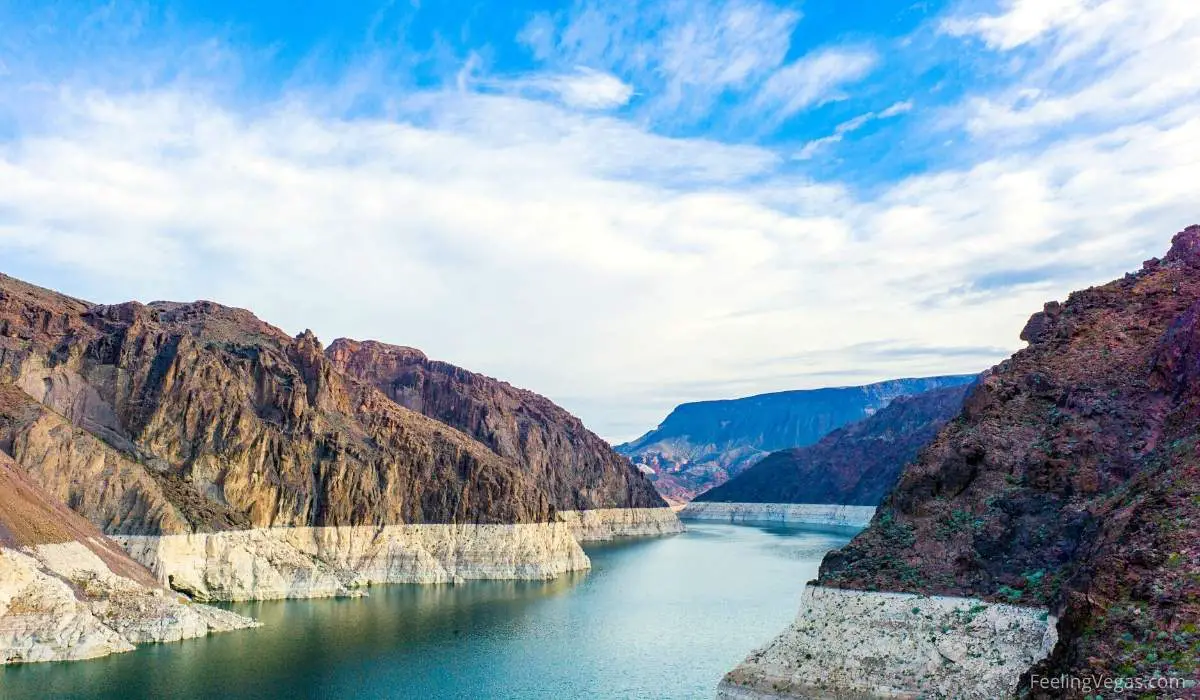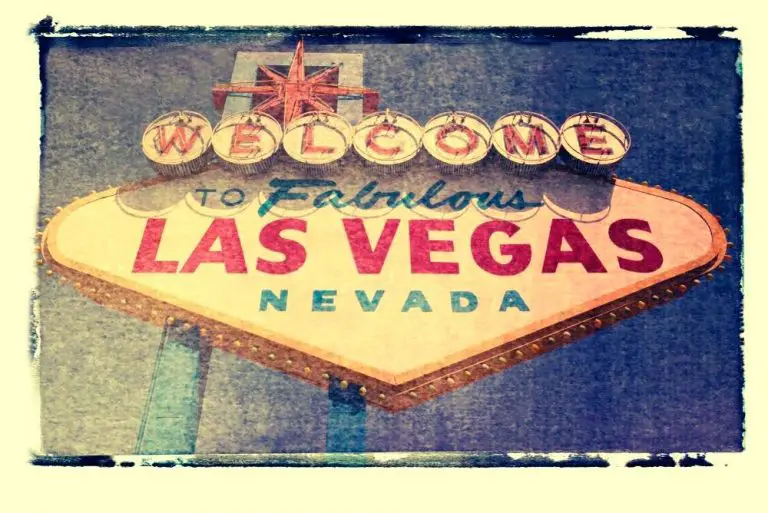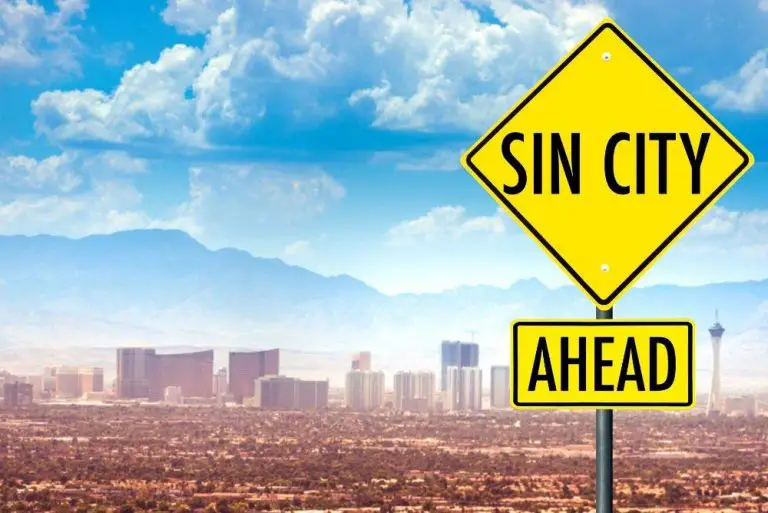Why Is Las Vegas in the Middle of Nowhere? (Answered)
Las Vegas is located in the middle of a desert, many miles away from the nearest sizeable town.
This seems like a strange location for a large city and major tourist destination, begging the question, why was Las Vegas built in the middle of nowhere?
Las Vegas is in the middle of nowhere because it started life as a stopover on the Salt Lake City Los Angeles Railway Line. Its convenient location drew many farmers and rural residents to the area. Later, it grew with the influx of workers constructing the Hoover Dam in the 1930s.
Keep reading this piece for a breakdown of why Las Vegas is located in the middle of the desert. I’ll explore why Las Vegas is where it is and how it became the world-famous city it is today.

Las Vegas’s Origins in the Los Angeles and Salt Lake Railroad
Las Vegas was first established in 1905 as a stopover on the Los Angeles to Salt Lake City railway line. Its earliest residents were farmers and rural residents who moved to the new settlement from neighboring areas in Utah.
These early settlers landed in the city for easy access to railway lines that allowed them to travel to nearby cities for trade and supplies. In 1911, Las Vegas became a part of Clark Countyz. It continued to grow slowly for about 20 years before urbanization took off.
Today, all of Las Vegas remains in Clark County, including the famous strip of casinos and hotels. However, its remote location also hints at the many previous lives the city has had. Many different people passed through over the years without finding a reason to settle down here.
Native American tribes lived in the Las Vegas valley as early as 10,000 years ago. Because of its desert location, they did not establish permanent settlements here, mostly staying the winter before moving out during the warmer months.
As far as the city’s modern origins go, they begin with an exploratory visit by John C Fermont, who first made camp in the area that would become Las Vegas in 1844. This is what put Las Vegas on the map. However, Fermont only camped there and didn’t start a permanent settlement in the area.
Later, various military outposts and a Mormon settlement were established in the area. However, none of these settlements lasted. So, Las Vegas, as a permanent settlement, was only established in the early 1900s. Thus, even though many people had lived here temporarily before, the city began its life as a railway stopover.
What Made Las Vegas an Attractive Stopover (Natural Springs)

The name Las Vegas means the meadows in Spanish. It was given to the area by a Spanish member of a trading party led through the region by Antonio Armijo when they uncovered lush meadows that had grown over a natural desert spring near Sunrise Mountain.
The meadows, which grew from the springs, are believed to be why Native Americans, Spanish Traders, Western Explorers, military outposts, and Mormons all chose Las Vegas as a suitable place to live. Later, the availability of water played a role in making the site attractive as a railway stopover.
Today, this site is commemorated by a historical marker with a signpost and by the Springs Preserve. Springs Preserve is a tourist attraction that aims to educate people about the natural and human history of Las Vegas. The attraction also includes rides, museums, and conservation efforts.
The Emergence of Modern Las Vegas as a Mega Resort

Las Vegas developed into a significant urban space when workers arrived en masse to build critical infrastructure like dams in the 1930s. This caused many young male workers to flock to the area in search of well-paying work.
The resulting influx of young workers earning a decent income attracted organized crime to develop entertainment facilities for new residents. The mob built casinos and hotels and nurtured the city for decades.
Power supplied by the infrastructure projects (Hoover Dam) also facilitated the urbanization of the city.
The criminal organizations that built much of Las Vegas were driven out during the 50s, 60s, and 70s. This gave rise to modern-day Las Vegas, a family-orientated mega-resort that attracts millions of visitors annually.
The Location-Based Challenges Las Vegas Faces Today

Although it is a flourishing city today, Las Vegas also faces significant challenges based on its remote desert location. It puts a strain on the city’s infrastructure and causes a host of other problems. These are some specific challenges that Las Vegas must manage to keep residents and tourists safe and happy.
Water
Las Vegas faced critical water challenges as recently as May 2022. In recent years, the city has been forced to regulate water use in swimming pools, gardens, and other areas to prevent disaster. The problem will require major infrastructure projects to correct as well as careful management of existing water resources.
I’ve also written another article about water problems in Vegas and discussed where Vegas could get water if Lake Mead dries up. [Where Will Las Vegas Get Water if Lake Mead Dries Up?]
Fire
Nevada, much like neighboring California, has witnessed record wildfires in recent years. This is believed to be a consequence of climate change, which has caused higher temperatures, drying out forests and making them easier to burn.
Nuclear Testing
Because of its remote location, Nevada has been the site of extensive nuclear testing. The leading Nevada Test Site, where most of these tests were conducted, is less than 70 miles from Las Vegas. In recent years, sites near Las Vegas have also been designated for nuclear waste disposal.
Final Thoughts
Las Vegas is located in the middle of nowhere for a few reasons. Firstly, the natural springs that had earlier drawn Indigenous Americans to the valley seasonally began attracting various other settlers to the region in the mid to late 1800s. Then, a railway stopover established the city as a permanent settlement.
The construction of Hoover Dam and accelerating growth drew people to the region. This was followed by nefarious groups like the mob, who further developed the city with gambling money and hotels.
Thankfully, in more recent years, the city has cleaned up and has grown to become one of the world’s biggest tourist destinations.






